Last Tuesday the second planet from the sun passed in front of the sun’s disk for the second and last time this young century. Back in 2004, I saw the first event briefly while parked outside a gas station trying to get out from under the clouds that had blocked us at our chosen observing site in Florida.
This time, I was pretty sure I could do a better job: a planned trip to relatively cloudless California coincided nicely with the timing of the event, and I had even planned enough time to land, enjoy the customary In-N-Out lunch at the airport, then make the long drive up to our home base (the in-law’s home in Atascadero) with an hour or so to spare before the event began.
Of course, things did not work out as planned. Although I was able to find the binocular filters I’d made years ago out of surplus Baader film, my full-aperture white-light filter made at the same time went missing before the trip. So I needed a last-minute replacement for that.
Here are the binocular filters; although they were made for different binoculars, the loving attention to detail and high-cost materials (cardboard tubes ain’t cheap!) meant I had to recycle them:
For the scope, though, I was in a bit of a fix. Woodland Hills Camera was sold out of “real” filters when I stopped in on the day of the event (gee, supply got outpaced by demand). They did have some black polymer filter material made by Thousand Oaks Optical, which, while not the beautiful white-light image I was used to from the Baader film, was purported to provide a yellow image similar to what the sun “looks like” (that is, what it looks like when you’re not blinded by its brilliance). So I got a sheet of that and went to work.
The staff weren’t particularly helpful in terms of advice and coaching, but they did have the raw materials I needed, and were gracious enough to cede me a corner of their shipping department to assemble the setup: the polymer film for the filter, and a screw-on 77mm camera filter made to fit my little telescope (the TV-60 accepts 77mm filters). With those, and the cardboard tube I had stuffed into my bag against the possibility of a sold-out store, I had what I needed. A few minutes with scissors and tape, and voila! My new filter was ready!
Then it was just a question of time. The stop at the camera store had put us a bit behind schedule, giving us only 3 hours to make what is, at the best of times, a 3-hour drive. I needed all the help I could get from the traffic gods, and the beginning of the drive was not kind. I had accidentally released the hood catch when I was trying to release the parking brake; a few minutes’ driving at freeway speeds into the strong headwind made it sound like the van was rattling to pieces! We put up with it while I was driving just a few miles per hour above the legal rate, but as we drew closer to home and we realized we had to pick up the pace, it was time to stop and secure the hood. After that it was just a matter of racing headwinds and the traffic (all speeding, but few speeding fast enough to suit my impatience!) trying to find someplace—anyplace!—that would allow an unobstructed view of the sun.
Having completely forgotten the timing of the event, I phoned my father-in-law to get news of when first contact would occur. He diligently researched the matter and informed me that it would happen sometime between 3:03 and 3:06 p.m. PDT. At every stage, I calculated how far we could make it before we had to pull over at a secondary or tertiary site. Gaviota: too far from home to tell. Buellton: too close to call. Santa Maria: 45 minutes away from home at 2:20.
It was a close shave, but we pulled into the driveway at Rancho Atascajoyner around 2:58. Just a few minutes to set up and find the sun, which can be a bit of a trick. I got everything set up fairly quickly, using the borrowed tripod, and miracle of miracles, I managed to find the sun with relatively little difficulty (a feat I was unable to duplicate when I moved the scope to a more comfortable observing position later in the event).
Here’s the setup:
I didn’t have an accurate time signal except for the clock on my Blackberry, but as it turns out, my camera’s clock was relatively well synced with reality: according to that clock, the transit started right around 3:07, and second contact was right around 3:23.
I took many shots with no idea of whether or not the event had started; the first few moments are very subtle, and 60mm is not a lot of resolving power. But here is the moment of first contact, as near as I can determine at 3:07:22 PDT, just a bit later than predicted, but my after-the-fact timing (determined by taking a picture of the time.gov time and adjusting my camera time based on that) could be wrong:
A closer crop of the same picture:
The next image, taken some 92 seconds later, clearly shows the impinging inner planet:
I had no idea how long there would be between first and second contact, so I frantically took picture after picture, checked the sun out with binoculars (I had my Baader binocular filters from the early 2000s) and discovered that it was a good 10–15 minutes (actually 18 or so!) between first contact and complete ingress.
Back in 2004, there had been a lot of talk about the “black drop” effect that made timing the moment of second contact quite difficult; since I wasn’t trying to time it, just take a picture of it, it was a bit easier, but having seriously underestimated the timing, I discovered upon review of the session that I was Very Fortunate Indeed to have captured the moment:
Check out this cropped version to see how hard it is to tell whether Venus is completely free of the sun’s limb (3:23:16 PDT):
Even the next shot, about 20 seconds later (3:23:37, is a bit ambiguous:
Cropped version here:
After the first twenty minutes, this once-or-twice-in-a-lifetime event settles into a rather humdrum routine of checking to be sure the planet’s still in view; it’s not going anywhere for several hours, so split-second timing is no longer necessary. Here’s the view from about an hour after the event started:
So after a 6-hour plane ride, a 4-hour van ride, and a 4-minute setup, I had a very nice view of Venus’s long slow slide across the face of the sun. I had bought three little solar viewers (the TO Optical filter material sandwiched between cardboard layers) for the other spectators, and I made sure that Eric got to see through the telescope, in hopes that his 109-year-old self will remember the view when it happens again in December 2117. Daniel, on the other hand, didn’t seem interested.

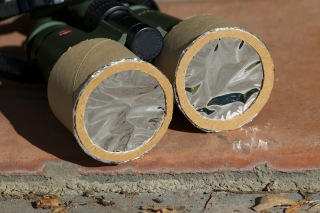
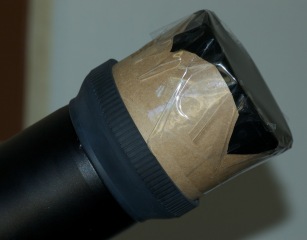
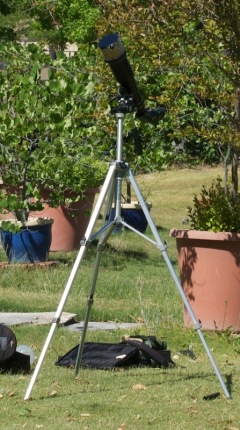
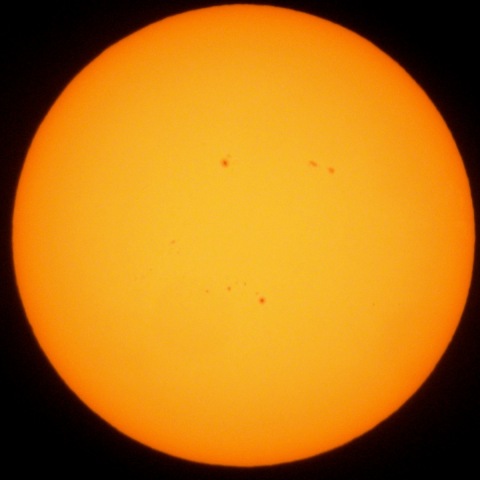
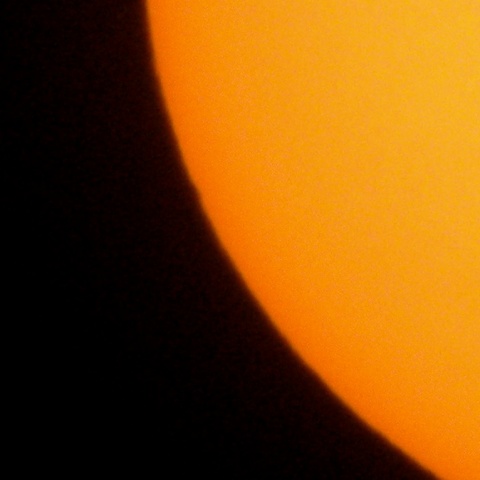
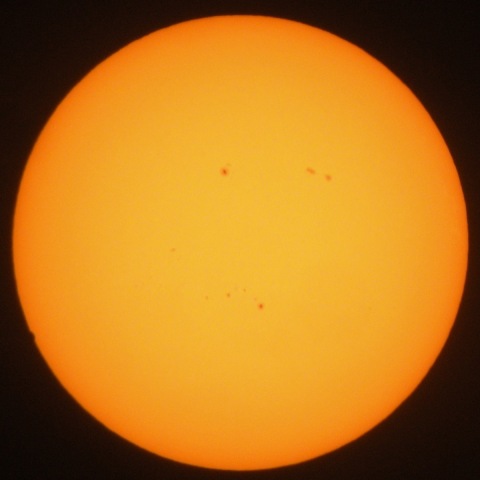
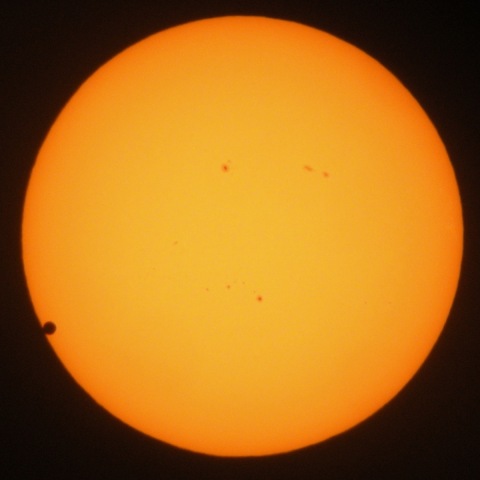
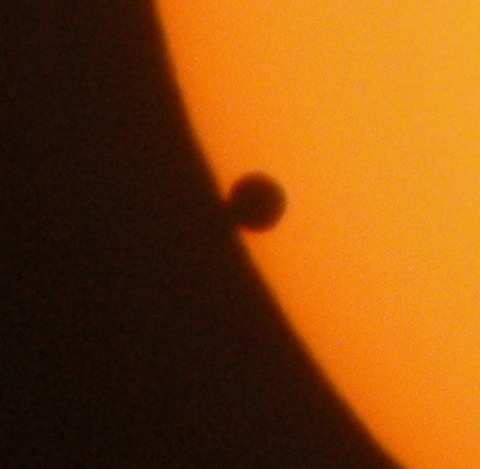
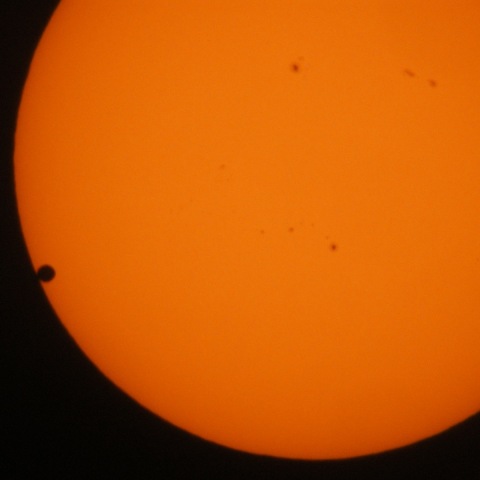
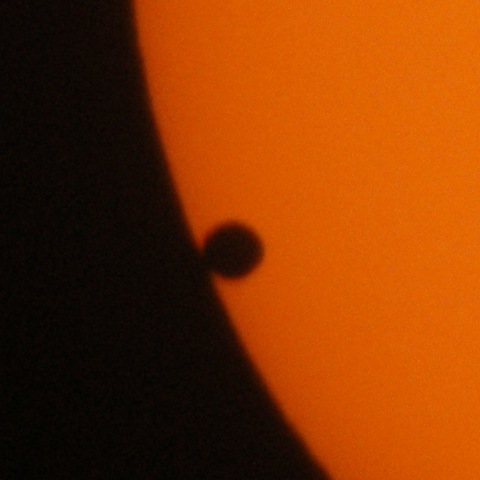
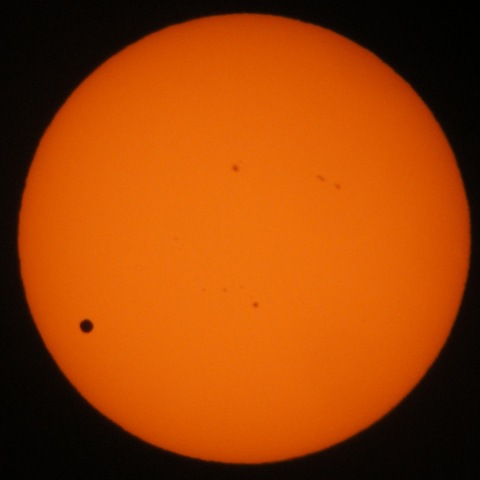






Thanks for sharing all this! What an adventure! dk
My pleasure; it was indeed a whirlwind event. Great fun.